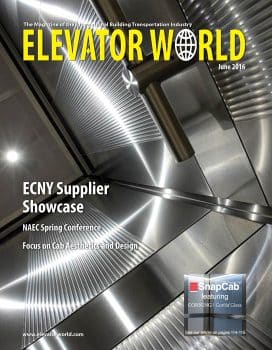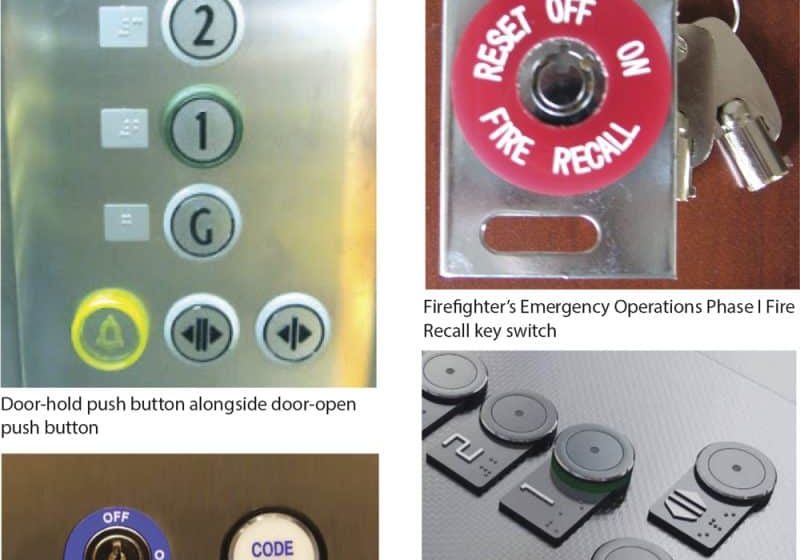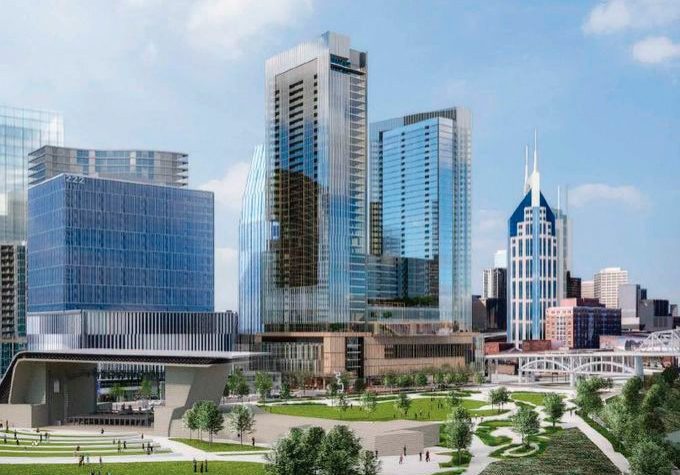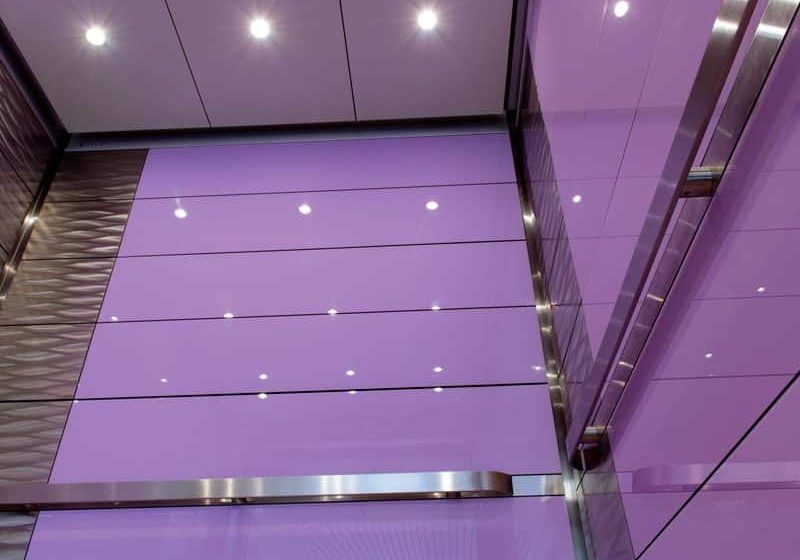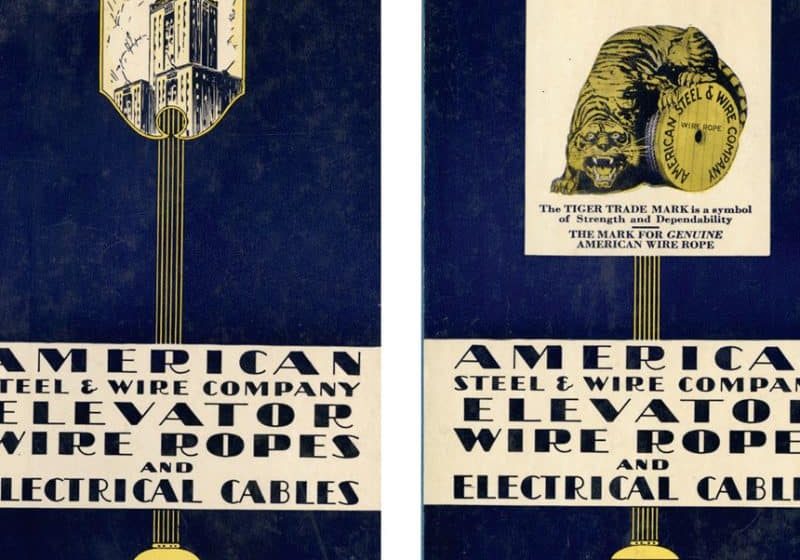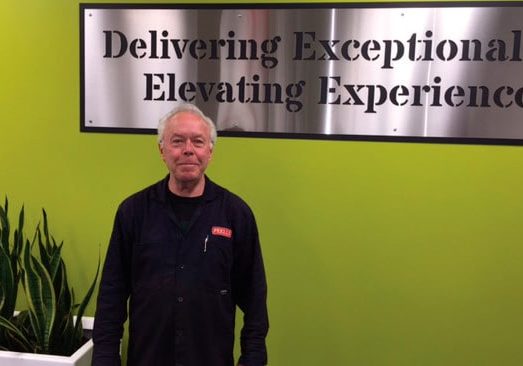This Reader’s Platform addresses the effect of visual elevator design on impressions and perceptions.
Elevators have changed since their first reference to one having been built by Archimedes in 236 BCE. Today, they not only move passengers up and down buildings in terms of transportation, they also move people emotionally in terms of design.
Every person who rides in an elevator often has his or her entire network in a pocket; the effect of social media impacts every aspect of marketing, including elevators in buildings. Twitter, Snapchat and Facebook open the doorway for passengers to share their experience with all their connections. When someone takes a selfie in an elevator and pushes it out to his or her friends, the interior of your cab is potentially viewed by a large number of people. Your brand is potentially displayed not only to passengers, but to their friends and family, as well. Will the people viewing your cab interior give it a “like” or comment negatively?
In the interior design of an elevator cab, there are endless possibilities; therefore, technical knowledge must align with creativity.
Today, we live in a fast-paced and visually stimulating world. We are more aware of our surroundings, and our expectations of those surroundings are higher than they have ever been. In fact, architects and designers agree with neuroscientists and psychologists that space has a strong impact on individuals. Commercial elevators were invented because buildings were being constructed higher than people could manage to easily walk. Their sole purpose was to take people up and bring them back down. Today, the elevator is where your guests make one of their first impressions; therefore, the interior of an elevator is just as important as its function.
As a passenger, we don’t give an elevator’s function much thought (unless it’s not working); however, we are aware and aesthetically pleased when the interior of an elevator creates an environment we can appreciate. Old elevator music has largely been replaced by interior elevator art and aesthetics. Blank walls have often been replaced with monitors displaying information regarding events and activities. Resources are often dedicated to modernizing equipment, but, passengers will never fully appreciate that investment in renovation simply because people don’t recognize what they can’t see.
Many of us were raised not to judge a book by its cover, but we all do, because first impressions matter. Office buildings and apartments take great pride in the designs of their lobbies and hallways, investing heavily in those areas. If the elevator interior is old or outdated, it can negatively impact market value, brand perception and overall view of the environment. When someone comes into the building, walks through the lobby and enters the elevator, the entire experience should be one of synchronization and accord. In addition, the elevator has to blend functionality with aesthetics according to the environment, whether it is a hospital elevator, service elevator or passenger elevator.
The only way to effectively manage expectations is to show what will be delivered and have the buyer agree to the design, and that simply can’t be accomplished today with a 2D drawing.
Each detail of a custom elevator interior can be tailored to meet specific needs, including panel size, material, colors, finishes, ceilings, flooring, handrails, inlays and lighting. A custom elevator cab can be created to complement the look and feel of any building with the potential to become a unique feature that benefits from a captive and recurrent target market.
Where does engineering meet art? In the interior design of an elevator cab, as there are endless possibilities. Technical knowledge, therefore, must align with creativity. When creating a custom elevator cab design, how do you manage customers’ expectations while ensuring they will be happy? The answer is simple: show them.
Many cab companies are still using two-dimensional (2D) modeling to present design. However, those designs are being delivered to buyers who expect information to be delivered in a high-quality format that is easily visualized and simple to understand. In selling an elevator, the sales cycle can be long or short, based on the value proposition and ease in visualizing the end product. We can no longer rely on flat drawings and a few small swatches of material for a customer to make a buying decision. 3D renderings provide customers with peace of mind that they’ve made the right decisions on materials, colors, products and layout. This helps shorten the sales cycle, because it provides the customer with a realistic rendition of the elevator by which to make the decision.
Some cab companies are well known for their manufacturing capabilities; however, clients may only use them for shells, because they aren’t confident in their interior design. Businesses today don’t have to hire a staff of engineers to deliver what their customers need – to do so would be nearly impossible, as the talent pool of engineers well-versed in the elevator industry is limited. In addition, an “on-demand” engineer can be more valuable, since the position eliminates the need to recruit, hire, train, manage and retain a full-time employee who you may not need full time.
Elevator design engineers have multiple choices in engineering computer-aided design programs that offer excellent 3D modeling capabilities, including the ability to create high-quality renderings. There are multiple advantages to the utilization of 3D modeling software, and they aren’t just limited to pretty pictures. More importantly, 3D modeling includes the aesthetic intelligence behind the design, and this is where engineering meets art. 3D designs can be produced faster and more accurately. In addition, they also reduce design errors, because 3D modeling is capable of parametric design property changes. Fewer design errors also transfer to fewer fabrication errors, lowering the cost of production.
3D cab design and modeling not only benefit the cab company, but also its customers. Consider how you personally make your buying decisions. Then consider that your customers are making their decisions the same way. If they aren’t presented with information they can visualize and easily understand, they will be left in a state of “analysis paralysis,” which significantly extends the sales cycle. If they move forward without the right information, you may install the elevator only to find out that your customer isn’t pleased with the end product. The only way to effectively manage expectations is to show what will be delivered and have the buyer agree to the design, and that simply can’t be accomplished today with a 2D drawing.
When designing your next cab, consider the benefits of using an “on-demand” elevator engineering design partner that can provide a unique, comprehensive and cost-effective solution, including quick turnaround, advanced creative design and the illustration of the intent of that design. Today’s cab buyer expects 3D modeling views, 2D elevations, details and colored snapshots with accurate material properties and weight analysis.
Get more of Elevator World. Sign up for our free e-newsletter.

